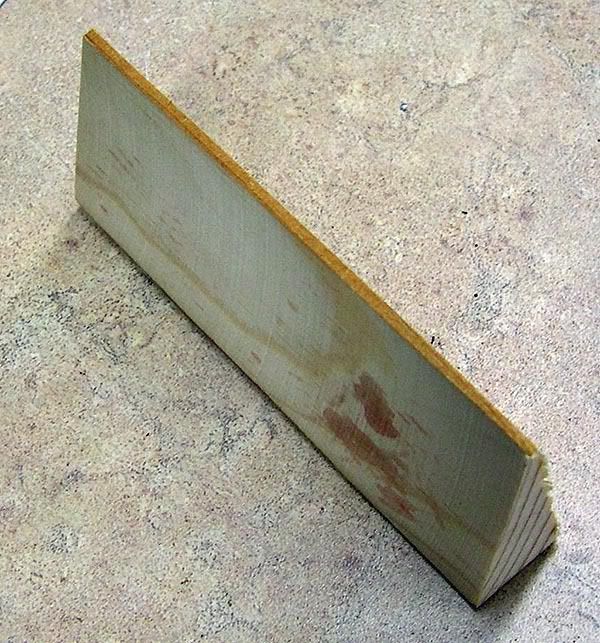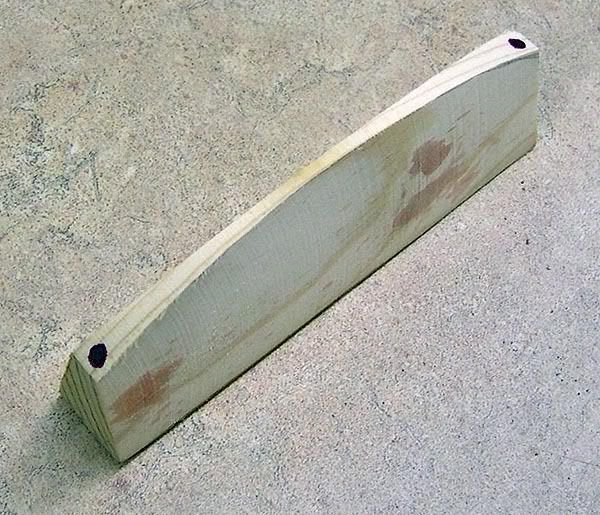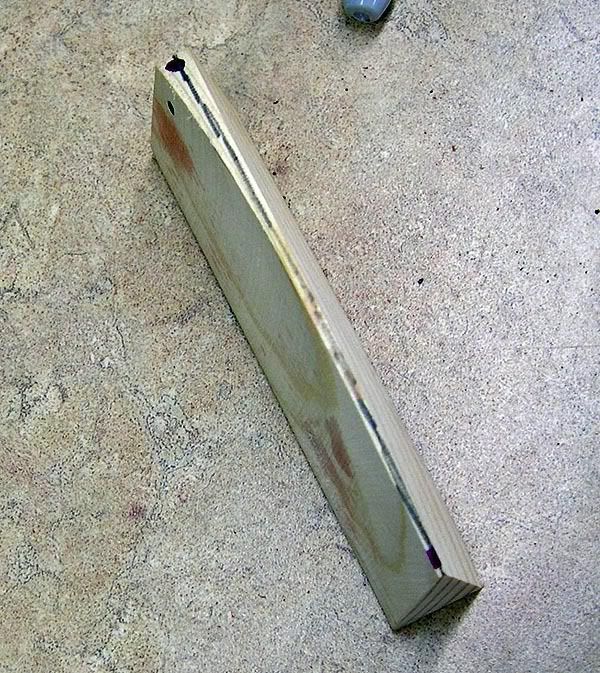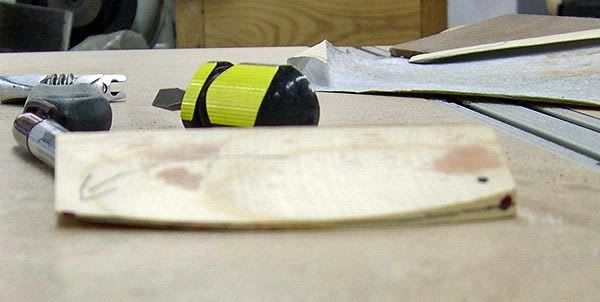Results 1 to 10 of 32
Thread: Help with a grind issue
-
11-12-2011, 08:01 PM #1
 Help with a grind issue
Help with a grind issue
So......my main work in progress thread is in "The Forge" area, but this is a very specific question on the grind issue I have. I'm getting close to giving up because I'm afraid I've stuffed it up something fierce.

Here's the ground edge. It was wider at the heel and the tip compared to the middle of the edge. However, the faces were sanded completely flat. I filed a little bit off the heel and toe areas only and left the middle alone. I've started re-flattening it down on sandpaper on marble, but it seems I'm going to be doing the same thing all over again. Is this going to end up with the edge wider at the toe and heel again? Am I just chasing my tail? Sorry if this doesn't make much sense, maybe I need to explain it a different way.
Here are the faces partially flattened again.


You can see the middle is coming up higher than the ends.
My junior technician has no idea either. Now what?

-
11-12-2011, 08:10 PM #2

Your problem is that because your blade has an arch to it you are getting what basically amounts to a three point contact (at the spine on both ends and the belly or edge in the middle). Your method of sanding/grinding on a surface plate will work but only if the blade is straight and parallel.
Since you have put a smile shape on your blade you are going to have to establish a center line on the edge and carefully draw file to that while maintaining a consistent thickness to your spine. It will take you a little more time but if you are careful and take your time it you will be able to do it.
Ray
-
11-12-2011, 08:48 PM #3

It looks normal to me, curved/smiling edges take a bit of work. I tend to go through iterations of establishing the flats, this shows me where I have to grind, then hollowing. Basically set bevel/find flats -> grind away flats till the are only at the edge and the spine.
Charlie
-
11-12-2011, 09:40 PM #4

Let me see if I can explain what is happening to you.
Look at the first photo. This wedge is (for the sake of argument) straight and parallel. The way you trying to grind, this type of blade can be done very easily. You grinding flat parallel surfaces on a flat surface. No problem.

Look what happens when we put a "smile" on the blade. I exaggerated it here to increase the effect. As you arch curve into the edge of this wedge you are climbing up the taper of the wedge making the leading corners thicker.

To correct this effect You need to establish a center line and file toward that center-line to correct the corners. However. You need to keep the spine a consistent thickness across its entire length. You do not want eh spine to taper toward the ends. You will almost have to do this freehand. Your surface plate is not going to help you with this.

The autofocus on the camera chose the wrong item so this one is a bit blurry but I think you can still see. Notice how the corrected surface curves up from the edge of the table its not a straight line from the center of the blade.

Now if the curve of your spine matches the curve of your edge you should be able to file this in such a way so that ...even though the leading edge curves up away from the table you can take a ruler from the spine to the edge from the centerline of the edges arch and the ruler will lay flat from spine to edge.
Do you intend to go back and hollow grind this on a wheel or belt grinder?
Ray
Ray
-
-
11-12-2011, 09:42 PM #5

That's normal and wil also happen when grinding a straight edge.
Basically the contact wheel of the grinder is not flat across the front. The ends are slightly convex. The middle part of your blade will always be thinner as the toe and heel side if you grind equal and parallel with the same pressure. It's mostly eye and hand coordination as you need to tilt the blade and push into the edges of your contact wheel to grind equal thickness all across your edge.
-
11-12-2011, 09:51 PM #6

When I read his post it was my understanding that he was doing this on sandpaper resting a marble surface plate.
If the surface of your contact wheel has an arch to it you need a new contact wheel. Sometimes you will find a little drop off of the edges of your idler wheel. Some manufacturers do that to help belt tracking but your contact wheel you grind on should be dead nuts flat. across its surface.
Ray
-
11-12-2011, 10:04 PM #7

I don't think so Ray. The contact wheels are configured that way so that smooth grinds can be achieved without digging the ends of the belt into the steel you are grinding on. We grind usually with 70D wheels. If I have to follow your advise I need to toss my dozen + contact wheels. Grind a few razors and then come back to me with your finding. The toe and heel side will always need more work when grinding.
-
11-12-2011, 10:13 PM #8

Maybe your grinder is specifically made to your specs and I'm cool with that.
However every belt grinder I have seen has had flat contact wheels. Mine on my 2x72 grinder are flat. The ones on my fathers are flat. Every knifemakers grinder I have ever seen has had flat contact wheels.
I am new to razors but this aint my first rodeo. I have been making blades since I was about 10 and I'm now 44. I knnow a lot of knifemakers and all the stock removal guys i know use 2" wide flat faced wheel and none of us dig in on longer blades.
I am planning to make a few razors. Maybe I will find your your right and I need a wheel that falls off at the edges but I don't think so. If I do I will certainly admit I was wrong and buy you dinner.
-
11-12-2011, 10:19 PM #9

That's good cause I'm hungry. My wheels area flat too. I'm talking about the outer edge. I have Bader and KMG wheels. All the same. You will need to compensate to wind up with a straight line across your cutting edge. Been grinding razors long enough to know what I'm talking about.
-
11-12-2011, 10:29 PM #10

When I am grinding away on auto pilot, (thinking about dinner or something, it is always food) I tend to grind the heel thick and the the toe thin. I have to make a conscious effort not to grind that way. I think a lot of grinding maladies come from muscle memory and bad habits.
Back on task one thing I forgot to say was, when I establish the flats on a smiling blade. I use a rolling X stroke, just like honing a blade with a big smile.
CharlieLast edited by spazola; 11-12-2011 at 10:31 PM. Reason: spelling, grammer, lack of


 4Likes
4Likes LinkBack URL
LinkBack URL About LinkBacks
About LinkBacks






 Reply With Quote
Reply With Quote


